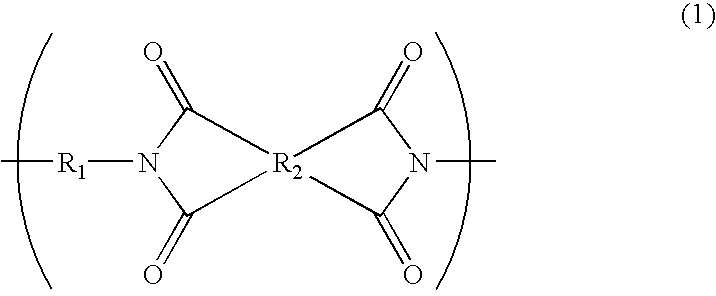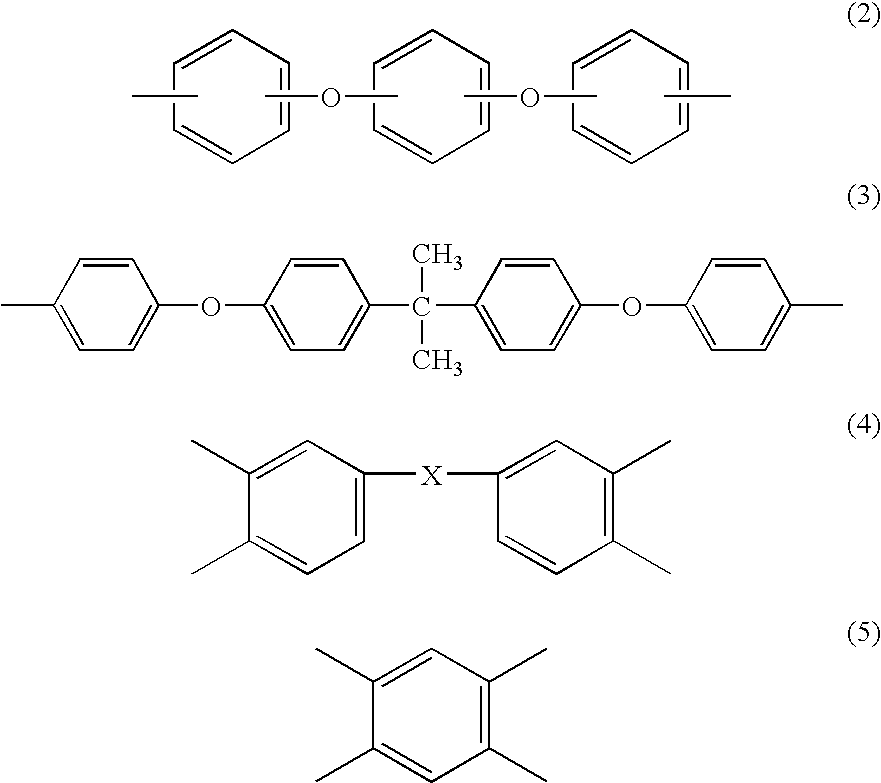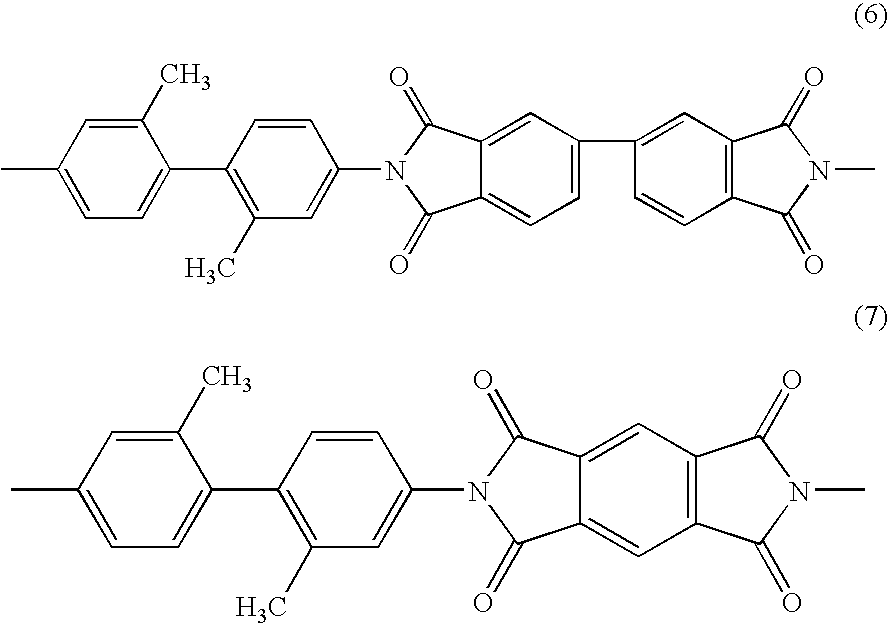Laminate for electronic materials
a technology of electronic materials and laminates, applied in the field of laminates, can solve the problems of not taking into account the difficulty of adjusting the various performance requirements of laminates in some cases, and the heat resistance of lead-free laminates. achieve excellent heat resistance and increase the temperature of the solder join
- Summary
- Abstract
- Description
- Claims
- Application Information
AI Technical Summary
Benefits of technology
Problems solved by technology
Method used
Image
Examples
synthesis example 1
[0076]65.02 g (0.306 mol) of DADMB and 40.88 g (0.204 mol) of DAPE were dissolved in 1.28 kg of DMAc in a 1.3 L vessel while the mixture was being stirred. Next, 29.58 g (0.101 mol) of BPDA and 87.73 g (0.402 mol) of PMDA were added to the mixture. After that, stirring was continued for about 3 hr to conduct a polymerization reaction, and a polyimide precursor resin liquid a having an apparent viscosity, measured with an E-type viscometer, of 150 poise (29° C.) was obtained.
synthesis example 2
[0077]22.13 g (0.076 mol) of 1,3-BAB was dissolved in 255 g of DMAc. Next, the solution was cooled down to 5–10° C., and 16.71 g (0.047 mol) of DSDA and 6.78 g (0.031 mol) of PMDA were added to the solution. After that, stirring was continued for about 1 hr to conduct a polymerization reaction, and a polyimide precursor resin liquid b with a viscosity of 26.4 poise (25° C.) was obtained.
synthesis example 3
[0078]29.13 g (0.071 mol) of BAPP was dissolved in 294 g of DMAc. Next, 3.225 g (0.011 mol) of BPDA and 13.55 g (0.062 mol) of PMDA were added to the solution. After that, stirring was continued for about 3 hr to conduct a polymerization reaction, and a polyimide precursor resin liquid c with a viscosity of 35 poise (25° C.) was obtained.
PUM
| Property | Measurement | Unit |
|---|---|---|
| temperature | aaaaa | aaaaa |
| temperature | aaaaa | aaaaa |
| temperature | aaaaa | aaaaa |
Abstract
Description
Claims
Application Information
 Login to view more
Login to view more - R&D Engineer
- R&D Manager
- IP Professional
- Industry Leading Data Capabilities
- Powerful AI technology
- Patent DNA Extraction
Browse by: Latest US Patents, China's latest patents, Technical Efficacy Thesaurus, Application Domain, Technology Topic.
© 2024 PatSnap. All rights reserved.Legal|Privacy policy|Modern Slavery Act Transparency Statement|Sitemap



